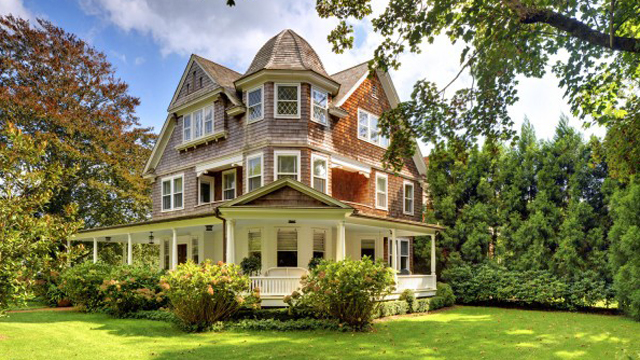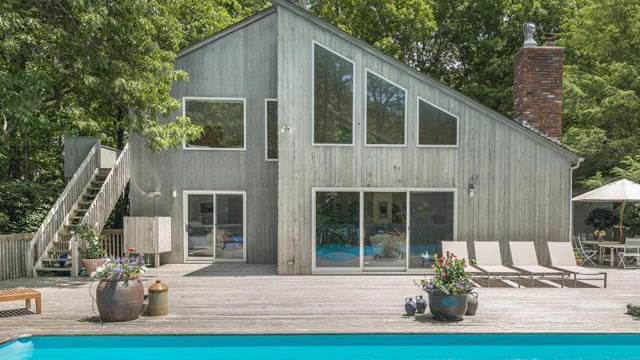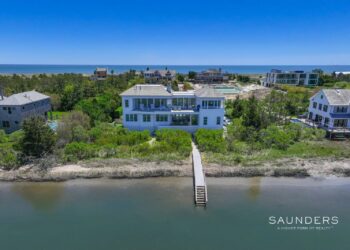We hear through the media that the real estate market has turned around. We also know, to paraphrase Congressman Tip O’Neil’s comment about politics, all real estate is local. Does the market up-turn in the Hamptons cut across all locations and price lines? Does it apply to sales and rentals? How are lenders responding to the changes and what impact are interest rates having? Are we in danger of repeating the mistakes that led to the 2008 real estate market crash?
For the answers to these questions I went to five real estate brokers who have been active in the Hamptons real estate market before and after the crash: Paul Brennan of Douglas Elliman, Alice Bell of Sotheby’s International Realty, James Oxnam of Brown Harris Stevens, Sarah Minardi of Saunders, and Cee Brown of The Corcoran Group.
Paul Brennan: If you look at the increase in the Community Preservation Funds receipts, it’s clear evidence of the increase in sales for both improved and unimproved properties. The increase in sales has led to seller optimism, and they’re firmer on their pricing, but we are not seeing the buying frenzy we saw before 2008.
John Viteritti: Is the increase across all price points?
Paul Brennan: In the higher price range, $15 million and up, buyers are more value-conscious. They look at it the way they look at other investments. In the $7.5 to $15 million range, buyers want all the amenities. I would consider the $2.5 to $7.5 million to be the lower price range and those buyers are more flexible.
John Viteritti: Are buyers focused on location, or will they sacrifice location for a property that includes all the amenities?
Paul Brennan: Location is the primary concern. People want to buy near their friends.
John Viteritti: We hear that buyers like to be in the Villages, although the house may not be suitable, which leads to the number of tear-downs. Can you comment on that?
Paul Brennan: Any home that is five years or older in likely to be a candidate for a tear-down.
John Viteritti: Please explain why, although most of the purchase are cash, buyers are motivated by low interest rates.
Paul Brennan: Because even though the purchase is not contingent on financing, the buyer will mortgage the property and pay a low interest rate rather than draw on its assets.
John Viteritti: How is the rental market?
Paul Brennan: The rental market is slow. That’s partly a result of the increase in buying.
John Viteritti: Do you see any signs that we may revert to the practices that contributed to the 2008 crash?
Paul Brennan: No, I don’t. I think buyers and lenders are more cautious, and sellers more realistic.
 |
|
Combining the elegance of a royal European country estate with the amenities of a five star resort, Three Ponds Farm offers an unparalleled private residence on 60+/-picturesque acres. Listed with Sotheby’s International Realty, price upon request. (Courtesy Photo) |
Alice Bell: I see bidding wars on the higher end properties. I also find that buyers first choose location depending upon proximity to the ocean rather than the Village or Town where a property is located.
John Viteritti: What do you think the driving force has been behind the turn-around in the real estate market?
Alice Bell: Clearly, the stock market. As the stock mark goes, so goes the Hamptons real estate market.
John Viteritti: I assume that the majority of your sales are cash.
Alice Bell: Yes, cash is king. But the buyers do mortgage the property to take advantage of the low interest rates.
John Viteritti: How is the rental Market doing?
Alice Bell: The $100k seasonal rental business is doing well. The $250 to $300k is not. There is a lot of inventory in that price range.
John Viteritti: Do you see any signs that we could return to the mistakes of the past?
Alice Bell: No, I do not. Sellers, buyers, lenders as well as appraisers are lot more cautious and realistic than before the crash.
 |
|
Located in the Huntting Lane Historical District on one of the Village’s most desirable lanes, this handsome 1903 Victorian, originally built by A.O. Jones, underwent complete restoration down to the most minute detail in 2009. Listed by James Oxnam of Brown Harris Stevens of the Hamptons for $8.5M. (Courtesy Photo) |
James Oknam: I think the East Hampton market has turned around almost to the point where we were in sales prior to 2008. We are approaching the same point as our affiliates in Manhattan. Sales are booming at very high prices. Summer has not usually been a very busy time for sales. That has not been true this year. I attribute that to the stock market and the number of international buyers.
John Viteritti: Is this true across all price points?
James Oxnam: I see the greatest activity in the $1 to $2.5 million price range, which is in line with the East Hampton $2.5 million median home price statistic. I also see activity under a million.
John Viteritti: Are most of your sales all cash?
James Oxnam: Yes. I haven’t had any recently that have been subject to a mortgage, although the buyers do get mortgages rather than use their own money.
John Viteritti: What do you see as the primary motivation for buyers when deciding what to buy?
James Oxnam: Location. Buyers want to be close to the ocean and close to town. East Hampton village affords them that opportunity.
John Viteritti: How is the rental market doing?
James Oxnam: It was strong just after the first of the year, and then died off. Right now there is too much product. Most of my rentals are repeats. I think July is becoming a more popular month than August.
John Viteritti: Do you think we will avoid the conditions that led to the 2008 crash?
James Oxnam: Yes, I do. Sellers are more realistic and buyers more savvy. And the banks are more cautious.
John Viteritti: Do you see lots of tear-downs?
James Oxnam: Yes, I do. People want location.
 |
|
Only a short distance to Jitney stop, specialty shops and ocean beaches, this turn-key four bedroom, three bath home is stylish and impeccably maintained. Listed for $1,325,000 by Sarah Minardi of Saunders. (Courtesy Photo) |
Sarah Minardi: Starting in the winter of 2013, sellers became more realistic in their pricing. We hit a lull in June, but sales have picked up since then. New construction is very active at all price-points.
John Viteritti: Where have you found the market to be most active?
Sarah Minardi: South of the highway and close to the Villages. Buyers want all the amenities. Deals over $2 million have been all cash. About 65 to 70% of our sales have been below $2 million. Investors are especially interested in tear-downs. They look to rent or do a re-sale.
John Viteritti: Your husband, Chris, is a mortgage broker. What is his experience with lenders?
Sarah Minardi: Buyers have to be well qualified to get a loan today. Banks look for income rather than assets. Older buyers who have no income, find it very difficult to qualify for a mortgage, even if they have assets.
John Viteritti: Given the combined experiences of you and Chris, do you think there is a danger of repeating the mistakes of the past which led to the market crash?
Sarah Minardi: No I don’t, because everyone is much more cautious. What I say to my sellers is, price your house right, otherwise you run the risk of becoming a comparison to the one’s that are.
Cee Brown: My market is Sag Harbor. Before the 2008 crash, it would take three months to close a deal. Up to a year ago, it could take fourteen months. Fortunately, that is no longer the case.
John Viteritti: What has happened to change that?
Cee Brown: Sellers have become more realistic in their pricing, and buyers are better informed. Many who come from the Manhattan real estate market of condominiums and cooperatives, have experienced buyer representation, and we are seeing that becoming more common in our market. Also, buyers are not as emotionally driven as they once were. They look for value. They know what comparable properties have sold for.
John Viteritti: Can you provide some context comparing the markets before and after 2008?
Cee Brown: Before the crash there were approximately 4,500 homes for sale. Mid-crash the number was about 17,000. The number now is more like 7,000 to 8,000. There is lots of inventory in the $2 to$ 3 million range. Wells Fargo feels that this number is sustainable.
John Viteritti: How has the rental market been doing?
Cee Brown: The rental market has not been good. I think the bad weather this past winter had a serious impact. People were just not coming out.
 |
|
Acclaimed designer Waldo Fernandez’s 6 bedroom 5 1/2 bath compound in East Hampton Village, just 5 blocks from the ocean, is as lovely and special as it gets. Listed by Cee Brown of The Corcoran Group for $9.5M. (Courtesy Photo) |












